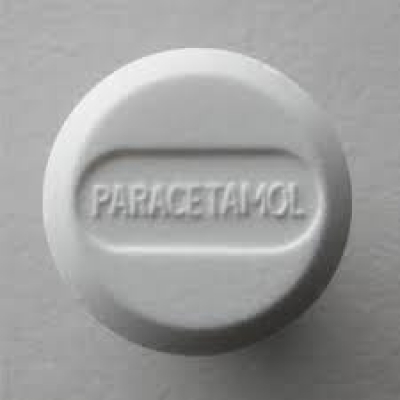Paracetamol - a first choice for the alleviation of pain
Paracetamol, sold under various brand names, is usually effective for patients suffering from osteoarthritis who suffer from mild to moderate joint pain. Paracetamol has been on the market since 1955, and is now the leading analgesic in the UK. This drug is not only effective, but is perhaps also one of the safest drugs you can take. It causes very few side effects when we take into account the millions of doses consumed each year.
Mode of action
Paracetamol relieves pain in a different way than NSAID drugs. Acetylsalicylic acid, ibuprofen and other NSAIDs block the production of prostaglandins, chemicals that increase inflammation and pain in the body. However, paracetamol has no effect on prostaglandins. It influences the nervous system, raising the brain's threshold of pain sensitivity.
Since paracetamol has no effect on prostaglandins, it does not soothe inflammation and therefore might not be so successful in the inflammatory type of arthritis as NSAIDs. The advantage is that, since it does not affect prostaglandins (including the "good ones" which protect the stomach mucosa), much milder for the stomach than NSAIDs.
Gaining respect
Recent research has shown that many patients with arthritis do not even need NSAID drugs. Even though the inflammations is definitely the main cause of the pain and damage to the joints in rheumatoid arthritis, scientists now know that inflammation is only rarely present in osteoarthritis, and this is by far the most common form of this condition. When paracetamol was compared to strong NSAIDs in clinical trials involving patients with osteoarthritis, this non-prescription analgesic has proved surprisingly effective.
Help for painful knees
One study, published in The New England Journal of Medicine in 1991, Included 184 patients with chronic, long-term knee pain resulting from osteoarthritis. It has been shown that paracetamol soothes pain equally efficiently as strong prescription drugs (NSAIDs).
This and other studies have shown that paracetamol soothes mild to moderate osteoarthritis pain as successfully as NSAIDs, that are sold only with a prescription, even when the joints are severely inflamed. Since it is proven that paracetamol works just as well as NSAIDs, but without the serious risks carried by regular intake of NSAIDs, it has become logical that patients with osteoarthritis should first try paracetamol.
Therefore, whenever a patient who suffers from osteoarthritis of the knee or hip appers, doctors are inclined to prescribe paracetamol as the first choice, up to the maximum dose of 4000 mg per day. If the patient is not showing any signs of improvement, the second choice will most probably NSAID ibuprofen.
Next drug, please
The mild effect of paracetamol to the stomach and gastrointestinal system gives it an advantage among drugs used to calm osteoarthritis-induced pain, which rarely includes inflammation (swelling, redness and heat). However, if you have been taking paracetamol during the course of a month, and it failed to relieve your pain, speak to your doctor about switching to one of the NSAID drugs.
Although NSAIDs carry a higher risk of side effects, they can offer greater pain relief than paracetamol. You may also realize that taking paracetamol together with NSAIDs provides pain relief with smaller (and safer) doses of NSAIDs than you usually need. However, always discuss with your doctor whether it would be safe for you to combine two different pain medications,what would the recommended doses be.
Word of warning
Even though in many ways safer than NSAIDs, paracetamol can cause serious problems and even death. People who take paracetamol on a regular basis - those taking it every day for many years - face an increased risk of liver or kidney damage. In addition, those who take it regularly as well as those who take it occasionally can severely damage their liver if they take large amounts of the drug and also drink three or more alcohol units per day.
Pay attention to the dosage
Problems with paracetamol almost always occur as a result of doses far higher than the maximum recommended ones (4000 mg per day). Among the elderly and those already suffering from some liver condition, even a moderately exceeded dose can be dangerous. Take note of how many pills you have taken every day. Try to count the pills you have taken once each day so as not to take more than that amount. If your pain leads you to the conclusion that you need to take more pills, you should first consult with your doctor.
Another warning - it can be dangerous to take paracetamol while fasting. Research done in 1994, published in the Journal of the American Medical Association, proved that people who are fasting or not eating, be it because of the flu or a stomach bug, if taking "moderately exceeded doses" of paracetamol - between 4000 mg (the highest recommended dose) and 10 000 mg a day - increase their risk of liver damage.
Paracetamol has more pros than cons
Compared with NSAIDs, paracetamol:
· is more favorable to the gastrointestinal system and carries a lower risk of stomach bleeding or ulcers
· carries less risk of raised blood pressure after longer taking
· carries less risk to cause liver or kidney disease
· carries less risk of interacting with other medicines
Medications sometimes stop working after several months or years of relieving pain. This phenomenon is called tachyphylaxis. Although the reason to this may be unknown, your doctor has two options: increase the dosage or prescribe a new drug. A drug that was not previously successful can sometimes be prescribed months or years after that, and will once again be successful.
FACT: Taking paracetamol with food and avoiding alcohol can reduce the risk of kidney damage.







